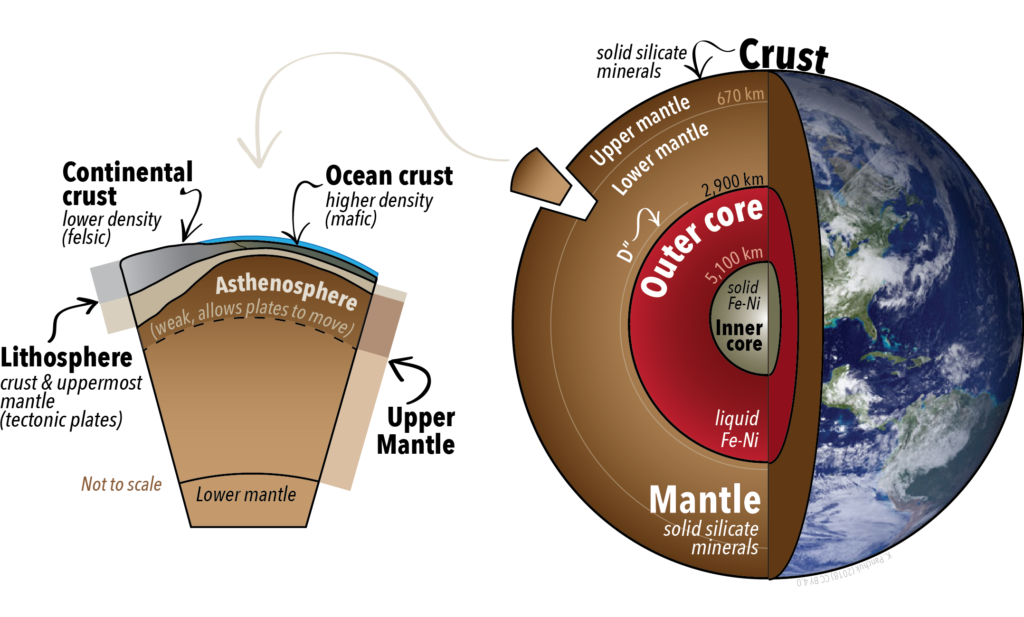A plate race shows the movement of tectonic plates. Gym mats are used as the plates and students represent the mantle below.
Plate tectonics is a scientific theory describing the large-scale motion of seven large plates and the movements of a larger number of smaller plates of the Earth's lithosphere (crust and upper mantle), since tectonic processes began on Earth between 3.3 and 3.5 billion years ago. The model builds on the concept of continental drift.

Tectonic plates are composed of oceanic lithosphere and thicker continental lithosphere, each topped by its own kind of crust. Along convergent boundaries, subduction, or one plate moving under another, carries the lower one down into the mantle; the material lost is roughly balanced by the formation of new (oceanic) crust along divergent margins by seafloor spreading. In this way, the total surface of the lithosphere remains the same.
Tectonic plates are able to move because the Earth's lithosphere has greater mechanical strength than the underlying asthenosphere. Lateral density variations in the mantle result in convection; that is, the slow creeping motion of Earth's solid mantle.

When techtonic plates fail to slide smoothly over, under or along each other, the sudden release of a "stuck" plate causes seismic waves to travel through the Earth's crust and mantle, causing an "earthquake".
